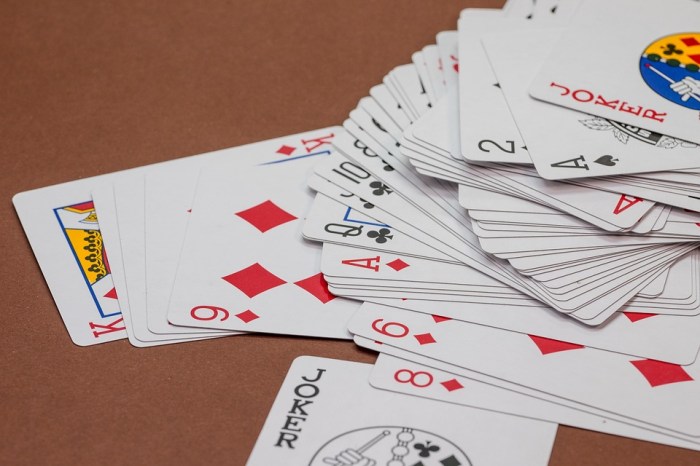
Board games for kids offer a wonderful blend of entertainment and education, fostering essential skills in a way that’s both enjoyable and interactive. These games not only provide a platform for family bonding but also contribute significantly to a child’s cognitive and social development.
As children engage with different board games, they learn critical thinking, strategy, and teamwork, all while having a blast. From classics like Monopoly to newer favorites like Catan, there’s a plethora of options suitable for various age groups, ensuring that every child’s interests and skills are catered for.
Board Games for Kids

Board games provide a fantastic avenue for children’s growth and development. Engaging in board games helps enhance cognitive abilities, social skills, and emotional intelligence while offering a fun way to connect with family and friends. By playing together, children learn valuable lessons in teamwork, patience, and critical thinking, all essential skills for their overall development.
Benefits of Board Games in Child Development
Board games foster various developmental aspects in children. They promote cognitive skills such as problem-solving, strategic thinking, and memory enhancement. Furthermore, social skills are cultivated as players interact, take turns, and communicate their thoughts. Emotional development is also supported through learning about winning and losing gracefully, which helps build resilience.
Engagement in board games can significantly boost a child’s self-esteem and social competence.
Popular Board Games Suitable for Different Age Groups
Selecting the right board game can be a delightful challenge, especially with so many options available. Here are some popular board games categorized by age group that encourage learning while being entertaining:
- For Ages 3-5:
– Candy Land: A colorful journey through Candy Land, perfect for introducing young children to turn-taking and basic counting.
– Animal Upon Animal: A stacking game that develops fine motor skills and hand-eye coordination while encouraging imaginative play.
- For Ages 6-8:
– Outfoxed!: A cooperative whodunit game that enhances critical thinking and teamwork as players gather clues to solve the mystery.
– Connect 4: A strategy game that encourages logical thinking as players aim to connect four discs in a row.
- For Ages 9-12:
– Settlers of Catan: A resource management game that promotes strategic planning and negotiation skills among players.
– Ticket to Ride: A fun way to learn about geography while players compete to build train routes across the country.
Choosing the Right Board Game Based on Interests and Skills
When selecting a board game, it’s essential to consider the child’s interests and skill level. Children who enjoy storytelling may gravitate toward role-playing games, whereas those who like problem-solving may prefer strategy games. Observing the child’s interaction with different types of games can provide insights into their preferences.
Matching board games to a child’s interests can significantly enhance their engagement and learning.
It’s also beneficial to assess the complexity of the game relative to the child’s age. Simple games can stimulate young minds, while more complex ones can challenge older children. Involving the child in selecting a game can lead to a more enjoyable experience and encourage them to explore new interests. By considering these factors, caregivers can promote a lifelong love for board games and learning.
Card Games for Kids

Card games are a fantastic way for children to develop various skills while having fun. They enhance critical thinking, promote social interaction, and can even introduce foundational math concepts. Here, we explore a mix of engaging card games that can be enjoyed by kids of different ages, along with the necessary rules for setup and play.Classic card games have stood the test of time and provide an excellent introduction to the world of card play.
They can be easily taught to children, making them perfect for family game nights or gatherings with friends. Some games focus on strategy, requiring players to think ahead, while others enhance math skills through counting and simple calculations.
Engaging Card Games for Kids
There are numerous card games that are entertaining and beneficial for children. Below is a selection of classic card games that are easy to set up and play:
- Go Fish: A fun game that encourages memory skills. Players ask each other for cards to make pairs, with the aim of collecting the most pairs by the end of the game.
- Uno: A popular card game that combines color and number matching. Players take turns playing cards from their hand, aiming to be the first to empty their hand.
- Old Maid: A game of chance and strategy where players try to form pairs while avoiding being left with the “Old Maid” card.
- Crazy Eights: This game enhances strategy as players try to be the first to get rid of all their cards by matching the previous card’s suit or number.
Rules and Setup for Classic Card Games
Teaching children the rules and setup of card games can be straightforward. Here are the essential steps for each of the games mentioned above:
- Go Fish:
- Players are dealt five cards each, and the remaining cards form a draw pile.
- Players take turns asking others for specific cards to complete pairs.
- If the requested card is not present, the player must “go fish” by drawing from the pile.
- Uno:
- Players start with seven cards, and the rest form a draw pile.
- The top card of the draw pile is flipped over to start the discard pile.
- Players must match the card in the discard pile by number, color, or symbol.
- Old Maid:
- Remove one queen from the deck and deal all cards to players.
- Players take turns drawing a card from the player next to them, aiming to form pairs.
- The game ends when all pairs are formed, and the player left with the Old Maid loses.
- Crazy Eights:
- Each player is dealt five cards, and the remaining cards form a draw pile.
- The top card is placed face-up to start the game.
- Players must match the top card’s suit or rank while trying to play all their cards.
Comparison of Card Games Focusing on Skills
Understanding the skills enhanced through different card games can help in selecting the right game for various developmental goals. Below is a comparison of card games that enhance math skills versus those that focus on strategy.
| Game | Math Skills Enhanced | Strategy Skills Enhanced |
|---|---|---|
| Go Fish | Counting pairs, memory recall | Basic strategy in card choice |
| Uno | Simple addition (keeping score) | Hand management, planning moves |
| Old Maid | None significantly | Risk assessment, memory |
| Crazy Eights | Counting cards, basic arithmetic in scorekeeping | Planning ahead, predicting opponents’ moves |
Choosing the right card game can maximize educational benefits while ensuring a fun experience for kids.
Other Games Categories
Games extend beyond board games and card games, encompassing a variety of types that cater to children’s interests and developmental needs. Among these are arcade and coin-op games, online games fostering teamwork, and roleplaying games that spark creativity. Each category offers unique benefits and experiences, making them valuable for young players.
Kid-Friendly Arcade and Coin-Op Games
Arcade and coin-op games are not just nostalgic for adults; many have been designed with children in mind, promoting fun and engagement in a safe environment. These games are often colorful, interactive, and easy to grasp, making them appealing to young players. Some popular examples include:
- Pac-Man: A classic maze chase game where players navigate Pac-Man through a maze, eating pellets while avoiding ghosts. It teaches hand-eye coordination and strategic thinking.
- Fruit Ninja: A fast-paced game where players slice flying fruits while avoiding bombs. It enhances reflexes and quick decision-making.
- Dance Dance Revolution: A rhythm game that encourages physical activity as players step on arrows in time with music. It promotes fitness and coordination.
- Mario Kart Arcade GP: A racing game featuring beloved characters, enabling children to compete in a fun, friendly environment. It encourages competitive spirit and teamwork when played in groups.
Online Games Promoting Teamwork and Collaboration
In today’s digital landscape, online games have emerged as significant tools for fostering teamwork among kids. These games often require players to work together to achieve common objectives, build communication skills, and strengthen relationships. Here are some noteworthy titles:
- Among Us: A multiplayer game where players collaborate to complete tasks aboard a spaceship while trying to identify the impostor among them. It develops critical thinking and social deduction skills.
- Fortnite: Known for its battle royale mode, this game allows players to form squads and strategize to win matches, promoting cooperation and leadership.
- Minecraft: The creative sandbox game where kids can build and explore together, fostering collaboration and creativity in a shared virtual world.
- Roblox: A platform that allows children to create and play games made by other users, encouraging teamwork in developing and enjoying a variety of game experiences.
The Role of Roleplaying Games in Fostering Creativity and Imagination
Roleplaying games (RPGs) play a significant role in enhancing creativity and imagination among children. These games provide a framework where players can immerse themselves in fantastical worlds, take on unique characters, and navigate various scenarios. RPGs encourage storytelling and imagination, allowing children to express themselves and think creatively. For instance, in tabletop RPGs such as Dungeons & Dragons, players create characters and embark on adventures guided by a dungeon master.
This format cultivates storytelling skills, problem-solving abilities, and teamwork. The flexibility inherent in RPGs allows players to explore different scenarios and outcomes, which can lead to rich, imaginative experiences.
“Roleplaying games can unlock a child’s imagination, making them not just players, but storytellers and creators.”
Epilogue
In conclusion, board games for kids are more than just a pastime; they are valuable tools that can help shape a child’s development in various ways. By selecting games that align with each child’s interests, parents can make playtime not only fun but also a meaningful part of their growth.
Expert Answers
What age is appropriate for board games?
Most board games are designed for children aged 3 and up, but it’s important to check specific age recommendations on the game boxes.
How can board games aid in a child’s development?
Board games enhance critical thinking, improve social skills, and boost emotional intelligence as children learn to cooperate and compete.
Are there board games that promote learning?
Yes, many games focus on math, language skills, and problem-solving, making learning fun and engaging.
How often should we play board games with children?
Regular play, such as once a week, can help reinforce skills and strengthen family bonds.
Can board games be played alone?
Some board games have solo modes, but many are designed for group play to encourage social interaction.




